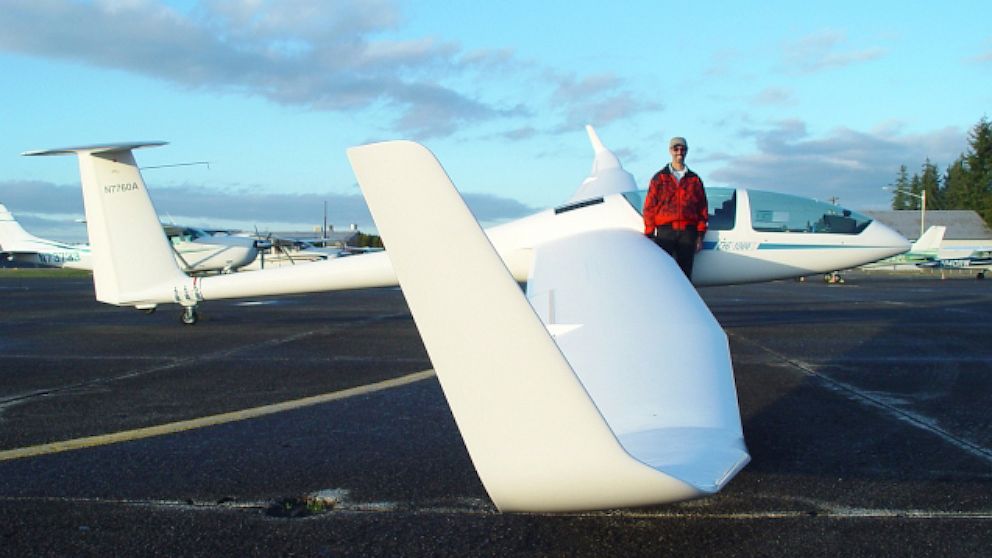Glider Pilot Dies Making Escalade Commercial
A glider pilot was killed during the making of a Cadillac Escalade commercial.

July 11, 2013 -- The filming of a TV commercial turned fatal when a high-performance glider, being towed aloft by a Cadillac Escalade, crashed and killed its pilot. The dead man's estate is now suing, alleging wrongful death.
According to court filings and to a National Transportation Safety Board (NTSB) report, the incident occurred on the afternoon of Oct. 13, 2011, at the Cle Elum Municipal Airport near Cle Elum, Wash.
TIPS ON HOW TO SURVIVE A CRASH LANDING
At around 4 p.m. local time, according to the report and the complaint -- with skies clear, visibility of 10 miles, and winds at 9 knots -- a high-performance, German-made Flugzengbau DG 1000 S glider owned and flown by local pilot William Lynn Weller was being towed down the airport's runway by the Escalade, to which it was connected by a rope.
The sequence, according to the complaint, was part of a TV commercial for the Escalade being filmed by the New York production company Supply & Demand. The glider, according to the complaint, was supposed to become airborne, then pace the Escalade along scenic, winding mountain roads, while being filmed by a helicopter.
At 70 mph, at about the mid-point of the runway, the glider had become airborne. Then, according to NTSB, the tow rope broke. The glider, which was about 200 feet above the runway, went into a steep turn; its nose dropped; and it "impacted the ground in a steep nose-low attitude," according to the report.
Some of these events were captured by a witness at the scene, using a cellular phone camera, say the plaintiff's attorneys and NTSB.
An autopsy performed later concluded that Weller, 53, had been killed by multiple blunt force trauma, according to the NTSB. Weller, says NTSB, was a commercial pilot with more than 1,600 flight hours. He was licensed to fly gliders, single-engine and double-engine planes. He also was a certified flight instructor.
What he wasn't, his estate's attorney say, was a stunt pilot.
Robert Hedrick and James Anderson of Seattle's Aviation Law Group claim in their complaint that Supply & Demand at first solicited bids for the commercial from professional stunt pilots. Later, however, the complaint alleges, the company decided to save money by not using one. Instead, says Hedrick, Supply & Demand solicited bids from local Cle Elum pilots, including ones who lacked experience in film or TV work. Weller, they say, lacked entertainment industry experience and was not a stunt pilot. He did, though, own a high-performance German glider worth in excess of $150,000, Hedrick said.
AUTOPILOT EYED IN SAN FRANCISCO JET CRASH
Hedrick, asked by ABC News if Supply & Demand had any obligation to hire a professional stunt pilot, says, "We think that will be a question for the jury to decide." While no law or statute may have required them to use a professional, he says, "prudent practice" says they should have.
Hedrick surmises that the company's reason for wanting to save money arose from the fact that, according to him, "their profit was included in their bid price" for the commercial. "You can put the math together," he says. "The more they saved, the more they made. Did that happen? We don't know yet, because we haven't yet entered into discovery."
Supply & Demand declined ABC News's request for comment. An attorney working for the defense, also asked for comment, did not respond.
After the crash, NTSB and the FAA inspected the glider's remains, which, says NTSB, were mostly intact. The board concluded there was no evidence of a preexisting malfunction or failure that would have precluded normal operation.
What happened? Hedrick, himself a pilot, thinks that after the rope broke and the glider lost altitude, a wing may have stalled.




